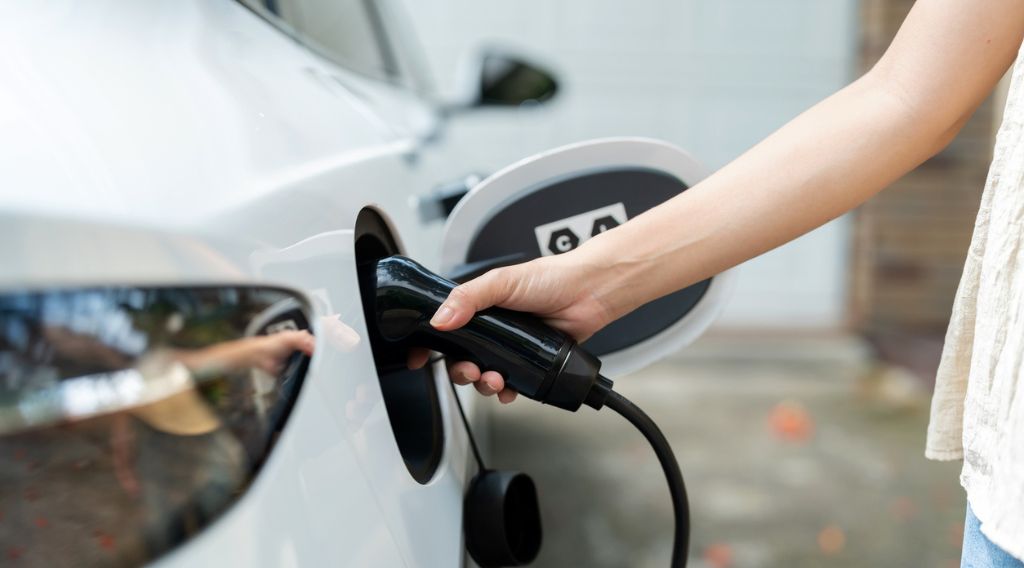
GPI recently updated our previous analysis to explore the emission reductions achieved by driving an electric vehicle (EV) in specific regions in the Midwest. The updated analysis affirms and strengthens our finding that driving EVs, in comparison to gasoline vehicles, can provide significant greenhouse gas emission (GHG) reductions, with increasing reductions expected in coming years for both Minnesota (the focus of our initial analysis) and the Upper Midwest.
As part of our efforts in Minnesota to promote the benefits of EVs, GPI conducted an analysis in 2016 of the emissions impacts of EVs and found that they provide large GHG reductions in the state as well as in the broader Midwestern region. Based on data from 2015, EVs had 42% to 61% fewer GHGs compared to gasoline vehicles.
We updated our previous analysis with more recent data for Minnesota-based electric utility Xcel Energy’s Northern States Power service territory and the northern region of the Midcontinent Independent System Operator (MISO) footprint. Our analysis with data from 2016-2017 now shows that EVs provide GHG reductions of at least 65% in Xcel’s Northern States Power service territory in 2017 and at least 53% in the greater MISO North Region. Already an improvement from GPI’s 2016 analysis, these emission reductions are set to increase through the year 2030, when an EV charging in Xcel’s territory will result in a per-mile GHG reduction of 75%.
Like last year’s analysis, GPI again utilized Argonne National Laboratory’s GREET Lifecycle Model to calculate emissions from gasoline and EVs. The results included emissions for the full lifecycle of a vehicle, including vehicle and battery manufacturing, fuel production and refining, and vehicle operation or fuel combustion. The improvement in GHG reductions was largely caused by two factors: updated generation fuel mix projections from Xcel that include significant new wind capacity and the use of more specific generation fuel mix data published by MISO for the MISO North Region.

Updated Xcel Generation Mix Projections
Since our 2016 analysis was published, Xcel announced plans for 1,550 MW of new wind capacity and has agreed to close the Sherco 1 & 2 coal generators by 2026. In a subsequent response to a Minnesota Public Utilities Commission information request, Xcel listed detailed projections for the generation fuel mix on its NSP System for 2016 to 2032. These projections show a decrease in coal’s generation share from 34% in 2016 to 15% by 2030, along with increases in wind and natural gas. As a result, electricity in Xcel’s service territory will see large reductions in GHG intensity over the next 15 years.

Source: MN PUC, E002/RP-15-21 Information Request No. 31, August 19, 2016 With these figures, GPI was able to update its calculation of GHG intensity for EVs. An EV charging in Xcel’s service territory will produce 163.5 grams of GHGs per mile (g/mile) in 2017, and only 118.5 g/mile in 2030, compared to a gasoline GHG intensity of 464.6 g/mile.
MISO North Region
For those EVs outside of Xcel’s Service territory, the generation fuel mix of MISO’s North Region provides a good estimate for GHG intensity across the Upper Midwest. Our previous analysis used the fuel mix from the entire MISO region, which includes fossil fuel heavy states such as Arkansas, Louisana, and Mississippi in the South Region. Further study of the MISO region has indicated that a significant transmission barrier exists between the South Region and MISO’s North Region, where wind power is more prevalent. While MISO is currently scoping transmission improvements that would improve the flow of electricity between these regions inthe future, the most accurate current estimate for electricity in the Upper Midwest should use MISO’s North Region.

In 2016, MISO reported a fuel mix for its North Region of 28% wind power, 48% coal, 14% nuclear, 8% natural gas, and 2% hydro. This results in a GHG intensity of218.3 g/mile for EVs in the MISO North Region, compared to last year’s estimate of267.9 g/mile for the entire MISO territory.
Final Results
This update to GPI’s 2016 analysis based on 2015 data has found that the GHG benefit of EVs has already improved, with a reduced GHG intensity from 183.1 g/mile in 2015 to 163.5 g/mile in 2017 for Xcel’s service territory.
This means that even when including vehicle and battery manufacturing, EVs already provide a 65% GHG reduction from gasoline and are set to provide a 74% GHG reduction by the year 2030. Outside of Xcel, EVs provide a GHG reduction ofat least 53% from gasoline across the Upper Midwest, while an EV powered by renewable energy still provides a 95% GHG reduction.

Acknowledgment: Thank you to Andrew Twite at Fresh Energy for feedback on Xcel and MISO fuel mix.
GPI facilitates Drive Electric Minnesota, a partnership of local and state government, utilities, private business and nonprofit entities working in collaboration to bring electric vehicles and plug-in charging infrastructure to the state. In addition, GPI recently partnered with several clean energy advocate organizations (Clean Fuels Ohio, Ecology Center, Environmental Law & Policy Center, Fresh Energy, the Sierra Club, and the Natural Resources Defense Council) to form a campaign called Charge Up Midwestdedicated to increasing EV deployment in the Midwest.


